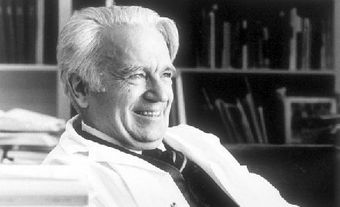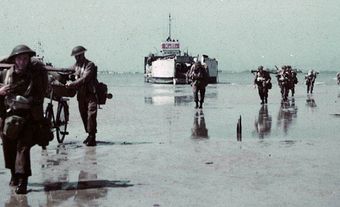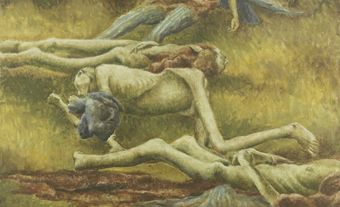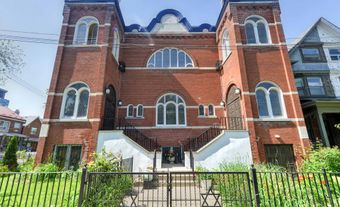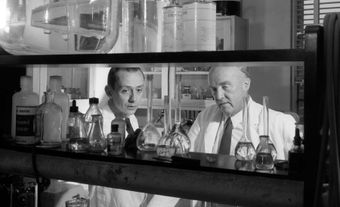Walter Kohn, theoretical physicist, professor, Nobel laureate in chemistry (born 9 March 1923 in Vienna, Austria; died 19 April 2016, Santa Barbara, United States). A refugee in England at the outbreak of the Second World War, Kohn was arrested in 1940 as an “enemy alien” and sent to Canada, where he was held in detention camps until 1942 (see Canada and the Holocaust). After his release, he studied mathematics and physics at the University of Toronto and Harvard University. He taught for many years at the Carnegie Institute of Technology and later at the University of California, San Diego and was the founding director of the Institute for Theoretical Physics at the University of California, Santa Barbara. Kohn was at the forefront of solid-state physics and quantum chemistry during his scientific career. For his work on “density functional theory” he was named co-recipient of the Nobel Prize in Chemistry in 1998.

Early Life and Education
Walter Kohn was raised in a middle-class Jewish family in Vienna, Austria. His father ran a publishing company that produced artistic postcards and Walter was expected to one day take over the family business. In his youth he attended the city’s well-regarded Akademisches Gymnasium secondary school but was expelled soon after the Nazi German takeover of Austria in the Anschluss of March 1938. The following school year, however, he was accepted at the Zwi Perez Chajes Gymnasium, a private high school for Jewish students. Kohn later recalled how his interest in science first developed there, inspired by two exceptional teachers in mathematics and physics.
Kohn was eventually forced to flee Austria to escape Nazi persecution. The family’s publishing company had been taken over soon after the Anschluss. The day after Kristallnacht (9-10 November 1938), the Kohn family home was broken into and Walter himself was arrested on the way home from school, but later released. His sister Minna had earlier left for England, where she was taken in by the family of one of her father’s business associates. In 1939, Walter’s parents arranged for him to leave Austria as part of the Kindertransport for England, where he joined his sister. His parents, Salomon and Gittel, were unable to escape and were later killed at Auschwitz.
Life in Canada
In May 1940, Kohn was arrested by British authorities as an “enemy alien” along with thousands of other German and Austrian nationals. Two months later he was shipped to Canada, whose government had agreed to take in British-held prisoners in the wake of the German invasion of Western Europe (see also War Measures Act; Canada and the Holocaust). Kohn was held at four internment camps in New Brunswick and Quebec over the course of a year and a half. While still a prisoner, he managed to continue his studies, as lessons were organized and provided by other Jewish internees. Kohn also purchased a math and physics textbook with the wages he earned from his work cutting trees. Through special arrangements made for interned refugees, Kohn successfully passed McGill University’s junior matriculation exams while imprisoned in Camp B near Fredericton, and its senior matriculation exams while at Camp A in Farnham, Quebec.
In January 1942, Kohn was released from Camp N into the care of the Mendel family in Toronto, who were themselves Jewish refugees. The Mendels introduced Kohn to the Polish physicist Leopold Infeld, who convinced Kohn to join the Math-Physics program at the University of Toronto. Initially, the chair of the chemistry department refused to allow any German or Austrian national to enter the chemistry building, where war-related research was being conducted, effectively barring students like Kohn from completing the required classes. In the end, the Dean of Arts and Sciences gave him a special dispensation to enter the program, removing chemistry from the course requirements. He was awarded his BA in 1945 and a master’s degree in applied mathematics in 1946. That same year he left Canada to pursue a PhD in physics at Harvard University, where he worked with theoretical physicist and future Nobel laureate Julian Schwinger. Kohn completed his doctorate in 1948.
Scientific Career
In the 1950s, Kohn taught physics at the Carnegie Institute of Technology, in Pittsburgh. During this time, he also took up research as a consultant at Bell Telephone Laboratories, in New Jersey, returning each summer for over a decade. In 1960, he joined the University of California, San Diego. He later became the first director of the Institute for Theoretical Physics, founded at the University of California, Santa Barbara, in 1979.
During his career, Kohn was at the forefront of solid state physics research and made a number of important contributions to the field. At Carnegie, he worked on innovative methods to determine the electronic structure of metals and developed a theory, later known as the “Kohn anomalies,” based on observations about the phonon spectra of metals. His years of collaboration with fellow physicist Joaquin Luttinger at Bell Telephone Laboratories, such as their work on an “effective-mass theory,” led to a number of innovative contributions to semiconductor physics.
The most prominent of Kohn’s scientific work was his development in the 1960s — first with Pierre Hohenberg, and later Lu Sham — of “density functional theory,” a method based in quantum mechanics used to calculate the electronic makeup of atoms, molecules and solid materials. Their work showed that it was possible to determine these electronic structures and calculate their energy by examining the spatial density of electrons, offering physicists and chemists a simpler and highly accurate method by which to better understand the electronic properties of many materials. It has since become widely used in the fields of physics and chemistry, biochemistry, material sciences, engineering and beyond. For his work on density functional theory, Kohn was named a co-recipient, with John Pople, of the Nobel Prize in Chemistry in 1998.
Honours and Awards
- Oliver E. Buckley Condensed Matter Physics Prize, American Physical Society (1961)
- Davisson-Germer Prize, American Physical Society (1977)
- National Medal of Science (1988)
- Eugene Feenberg Medal, International Conference (1991)
- UNESCO Niels Bohr Gold Medal, UNESCO (1998)
- Nobel Prize in Chemistry, Royal Swedish Academy of Sciences (1998)
- Richard E. Prange Prize and Lectureship in Condensed Matter Theory and Related Areas, University of Maryland Department of Physics and Condensed Matter Theory Center (2010)

 Share on Facebook
Share on Facebook Share on X
Share on X Share by Email
Share by Email Share on Google Classroom
Share on Google Classroom
